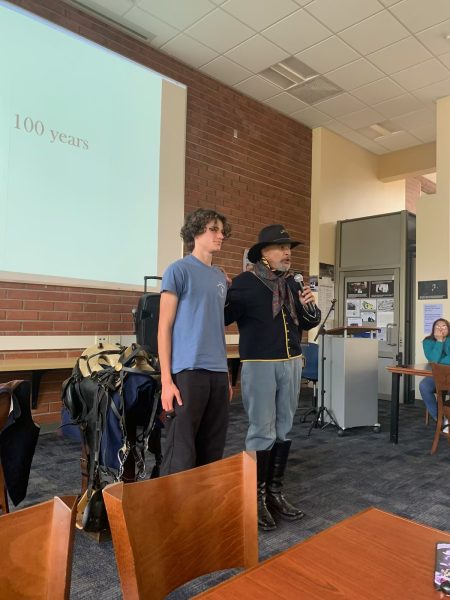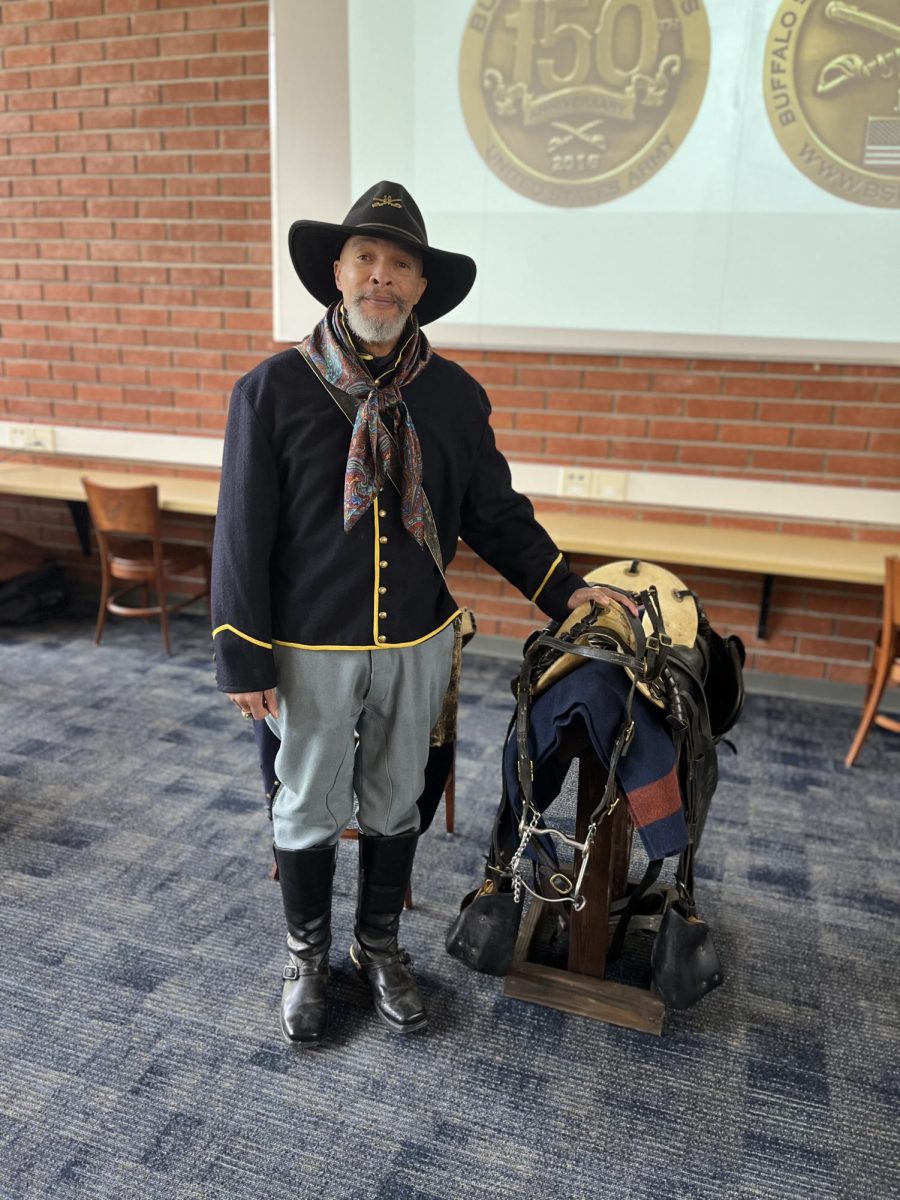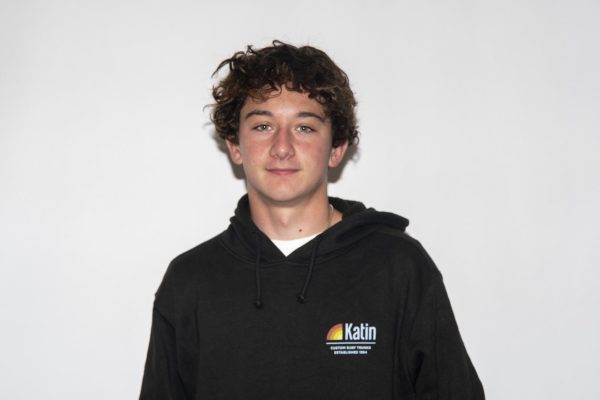They helped the United States occupy land to expand west, they aided the U.S. in the American Civil War and they were the country’s national park rangers, yet today few people know their story. Who were these people? The Buffalo Soldiers, of course. On February 23, RUHS had its first-ever Buffalo Soldier demonstration. The demonstration was organized by Special Day Class teacher Dr. Monica Mallet, and took place in the library. It was led by Trooper Jay M. Collins, founder and president of the Buffalo Soldier Mounted Cavalry Unit (BSMCU), whose mission is to educate others about the contributions of Buffalo Soldiers in American history.
“For Black History Month, I wanted to do something a little bit different. I was talking to a friend with a daughter in a private school, and found out [Trooper Jay M. Collins] went to their school last year. I knew that he would be great [because] I could have him come to our class and talk about Buffalo Soldiers,” Mallet said.
The Buffalo Soldiers were a strong fighting force of African American soldiers who worked from the mid-1800s to the mid-1900s. They got their name from their curly black hair, which was said to resemble that of a buffalo, and their fierce fighting skills which were strong like a buffalo. The soldiers were key to preserving and maintaining United States land to support the nation’s westward expansion. Mallet felt their story deserved to be honored, especially for Black History Month.
“Buffalo Soldiers are a part of American history, but it’s a story that’s not often told. Having someone who is involved in the [BSMCU], who is a part of that history, who is here to help that history and that legacy live on, who is [truly authentic], is a valuable learning experience for students,” Mallet said.
Collins educated both Mallet’s Special Day Class and Robert Cracknell and Robert Rainey’s third period English class through a series of projected slideshows that detailed the lives of the soldiers.
“The soldiers only made $13 a month. They had to fight off animals. They cleaned the lands of the indigenous people and relocated them to what were inhabitable lands. [Though it was hard], what happened was necessary to forge the United States,” Collins said.
In addition to wearing an authentic Buffalo Soldier uniform and bringing an authentic horse saddle to his presentation, Collins interacted with the students as he spoke.
“[Trooper Jay M. Collins] brought one student up, and said [the student] was the exact size of an average Buffalo Soldier (5 feet 8 inches tall and 120 pounds). Having that visual there got the students involved,” Mallet said.

Before his work as a Buffalo Soldier historical educator, Collins spent over forty years in law enforcement in the LAPD and the Los Angeles International Airport Police Department. After all his service, Collins says he founded the BSMCU because of his own “passion.”
“It’s all about passion. Most people don’t know the story of the Buffalo Soldiers, but it’s important. Money isn’t involved; [the BSMCU] does this out of the kindness of our hearts,” Collins said.
When all was said and done, an overall message that some students got from the demonstration was how much grit the Buffalo Soldiers possessed, and how strong they needed to be.
“Honestly, I don’t think I could have been a Buffalo Soldier due to their harsh [circumstances like weather and animals],” sophomore Logan Atkinson said. “There’s a lot of commitment needed to be a Buffalo Soldier. The Buffalo Soldiers inspire me to want to become a tougher person.”





